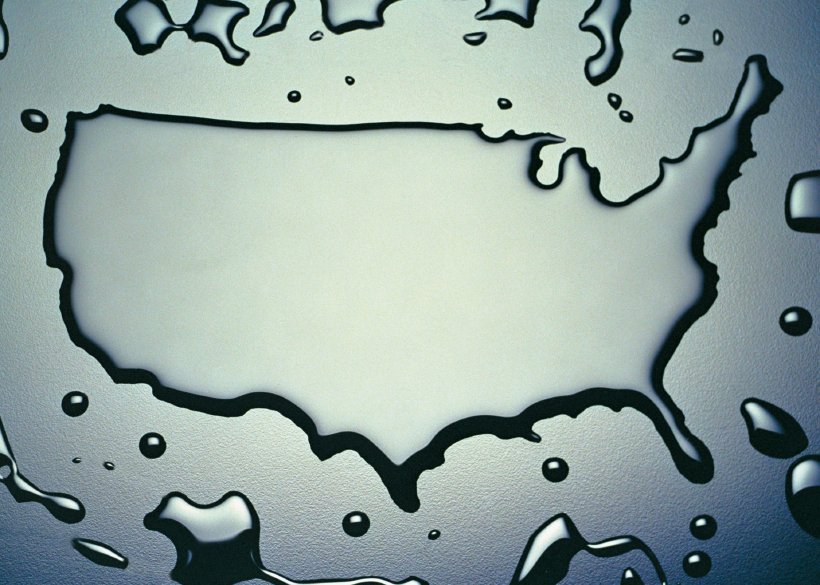 |
What WOTUS Does
Briefly, WOTUS redefines which waters are waters of the United States and, by doing so, decides whether your project will need a permit.
According to the EPA, the rule does not alter existing exemptions from Clean Water Act (CWA) jurisdiction, including exemptions for normal farming, ranching, and silviculture activities.
The major and most controversial definitions affect tributaries to traditionally navigable waters, adjacent wetlands, and isolated or other waters. Specifically:
- Tributaries. “Tributary” is now defined for the first time. Tributaries are water features with the physical characteristics of a bed and banks, and an ordinary high-water mark that exhibits flow. Wetlands and open waters without a bed and banks or high-water mark will be evaluated for adjacency.
- Adjacent wetlands/waters. The final rule covers waters adjacent to jurisdictional waters within a minimum of 100 feet (ft) and within the 100-year floodplain to a maximum of 1,500 ft of the ordinary high-water mark.
- Isolated or other waters. The final rule covers the following specific waters if they have a significant nexus and are “similarly situated”—prairie potholes, Carolina and Delmarva bays, pocosins, western vernal pools in California, and Texas coastal prairie wetlands. Also included in this category are waters with a significant nexus within the 100-year floodplain of a traditional navigable water, interstate water, or the territorial seas, as well as waters with a significant nexus within 4,000 ft of jurisdictional waters.
In addition, the rule continues the current policy of regulating ditches that are constructed in tributaries or are relocated tributaries or that, in certain circumstances, drain wetlands or that science clearly demonstrates are functioning as a tributary. That policy has always been a little murky. But the new rule now explicitly excludes certain categories of ditches, such as ditches that flow only after precipitation.
Forget expensive calls to lawyers and consultants. With Enviro.BLR.com, you get instant access, 24/7. Try it out today and get the 2015 EHS Salary Guide, absolutely free. Download Now.
What They’re Saying
Supporters are saying that the EPA and the Corps have taken appropriate “steps” to protect critical waters, some indicating that they would like to see additional steps in the near future. Let’s look at some industry reaction, which has been decidedly negative, some alleging a “power grab” by the Obama administration.
Private Property at Risk, Says the National Association of Homebuilders
“This rule will increase federal regulatory power over private property and will lead to increased permit requirements, project delays and avoidance and mitigation costs. Equally important, these changes will not significantly improve water quality because much of the rule improperly encompasses water features that the states already have the authority to regulate.”
Even Worse, says the American Farm Bureau
“Our analysis shows yet again how unwise, extreme and unlawful this rule is. Our public affairs specialists and legal team have assembled the best analysis available anywhere, and their conclusions are sobering: Despite months of comments and innumerable complaints, the Waters of the U.S. proposal is even worse than before.”
“Instead of inviting and openly considering public input, the EPA conducted an aggressive advocacy campaign to obscure the on-the-ground impact of the rule and to smear groups, like Farm Bureau, that dared to explain those impacts to the public.”
Nobody Listened, Says the U.S. Chamber of Commerce
“The Chamber filed lengthy public comments identifying exactly how the proposal could affect businesses of all sizes, including local municipalities, and requested the agencies convene a small business review panel to study and evaluate those impacts. Numerous state, local and business stakeholders and the Small Business Administration (twice) echoed that request, to no avail. The agencies’ failure to consider these impacts renders the rulemaking procedure fundamentally flawed.”
Everything You Need for Environmental Compliance
Enviro.BLR.com puts everything you need at your fingertips, including practical RCRA, CAA, CWA, hazardous waste regulatory analysis and activity, news, and compliance tools. Try it at no cost or risk and get a FREE report.
Guise of ‘Clarity,’ Says the National Association of Manufacturers
“From ditches, to ponds, to creeks, this regulation will expand the Administration’s regulatory reach even further into the operations of manufacturers, farmers and small businesses. Under the guise of providing ‘clarity,’ the EPA and the Corps have expanded the federal government’s reach into manufacturers’ on-site activities.”
Not Surprised, Says the Independent Petroleum Association of America
“It comes as little surprise that this long-awaited final rule significantly expands the federal government’s authority over land and water use across the nation, affecting all American landowners. Increased federal jurisdiction over nearly all waters in the United States will create substantial permitting and compliance burdens for few environmental benefits. The impacts of this rule go beyond American energy development. There are serious concerns about retroactive applications of the rulemaking and added costs on business operations. This regulatory regime will result in far more significant economic impacts and unintended consequences than the Obama Administration is leading the American people to believe.”
The Advisor Says
“See you in Court.”
